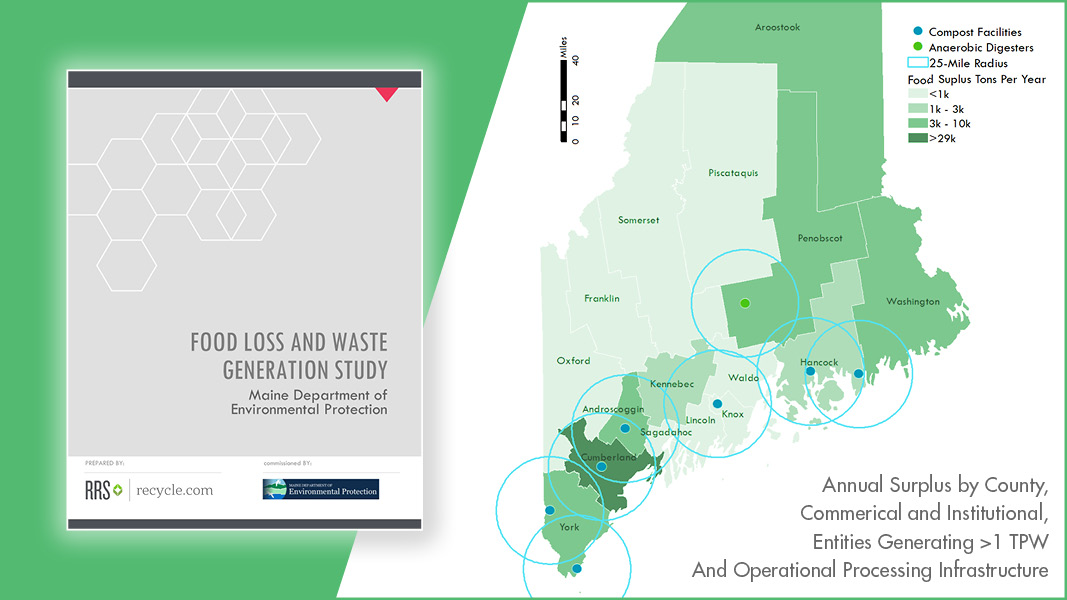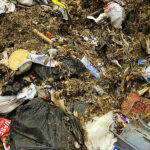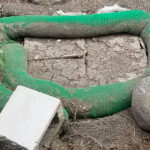Top: Graphics courtesy Maine Department of Environmental Protection
The Maine Department of Environmental Protection released its “Food Loss and Waste Generation Study” in May 2024, which quantifies food waste generation across sectors — including residents, large multi-family complexes, farms, food manufacturers, grocery stores, among others. Sector-specific generation factors were identified and selected from existing literature. Approximately 361,000 tons of food loss and waste are generated annually in Maine, according to the study. The residential (36%) and agricultural (25%) sectors are the most significant contributors, together producing 61% of Maine’s food loss and waste. Commercial businesses are responsible for 130,846 tons, 37% of the total waste, with grocery and food manufacturing being the major contributors. The potential to recover 43,000 tons of edible surplus annually has been indicated by food recovery organizations. Estimates show that over 870 farms experience over 90,000 tons/year of food loss annually, although the majority is plowed under in the fields. Maine has eight operating composting sites and anaerobic digestion facilities that have the capacity to process approximately 83,600 tons of wasted food. Exeter Agri-Energy, a farm-based anaerobic digester plant in Exeter, Maine, processes a significant portion of this material. The facility is permitted to process over 80,000 tons annually.













